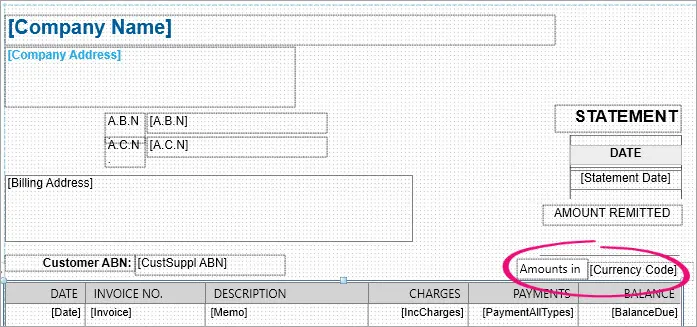AccountRight comes with a handful of statement form templates you can use when printing or emailing your customer statements. And it's easy to change these forms to add your own personal touch.
By default, business details entered in the Company Information window (Setup menu > Company Information) will appear on your statements. This includes your company name and contact details:
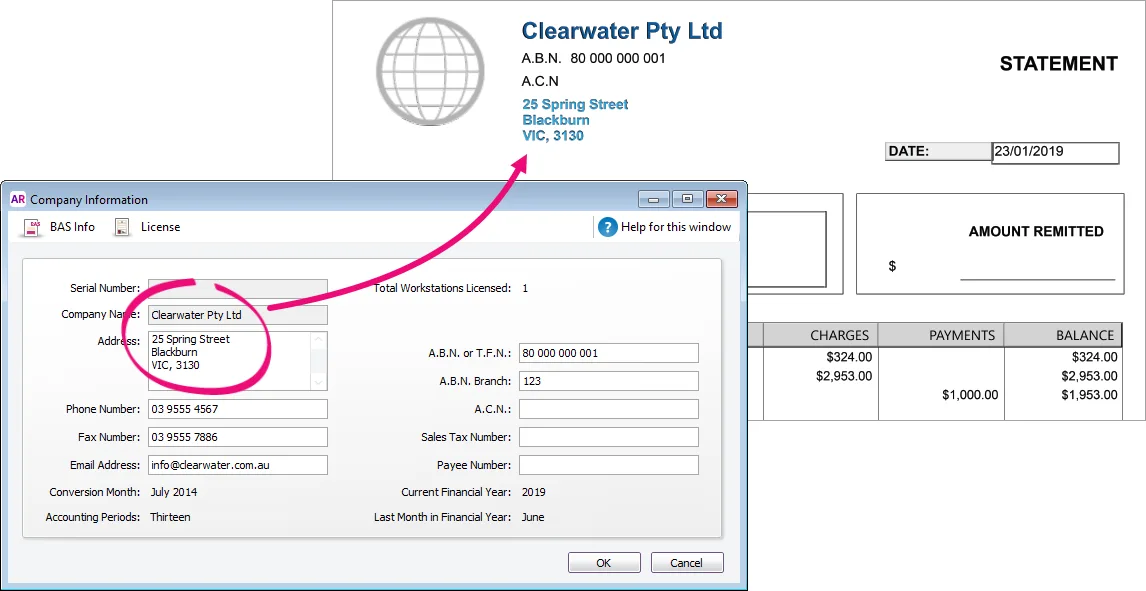
You can add your business logo or specific payment requirements, or make your statements stand out with a splash of colour. It's up to you.
OK, let's step you through it.
To customise a statement
Go to the Setup menu and choose Customise Forms. The Customise Forms window appears.
Click the Statements tab on the left.
Click the type of statement form you want to customise (Invoice or Activity). The forms for that statement type will be listed.
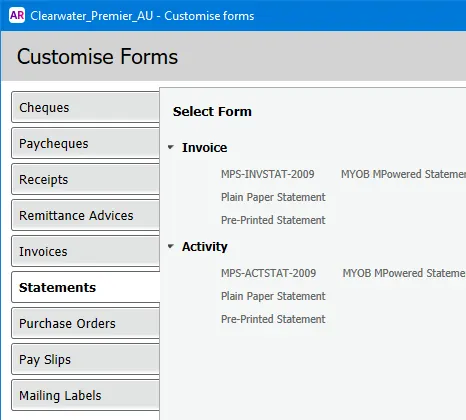
Choose the correct form
Make sure you're customising the correct statement form for your needs. For example, if you send Invoice statements, customise an Invoice statement form.
Select the form you want to customise then click Customise. The form opens, ready to be modified.
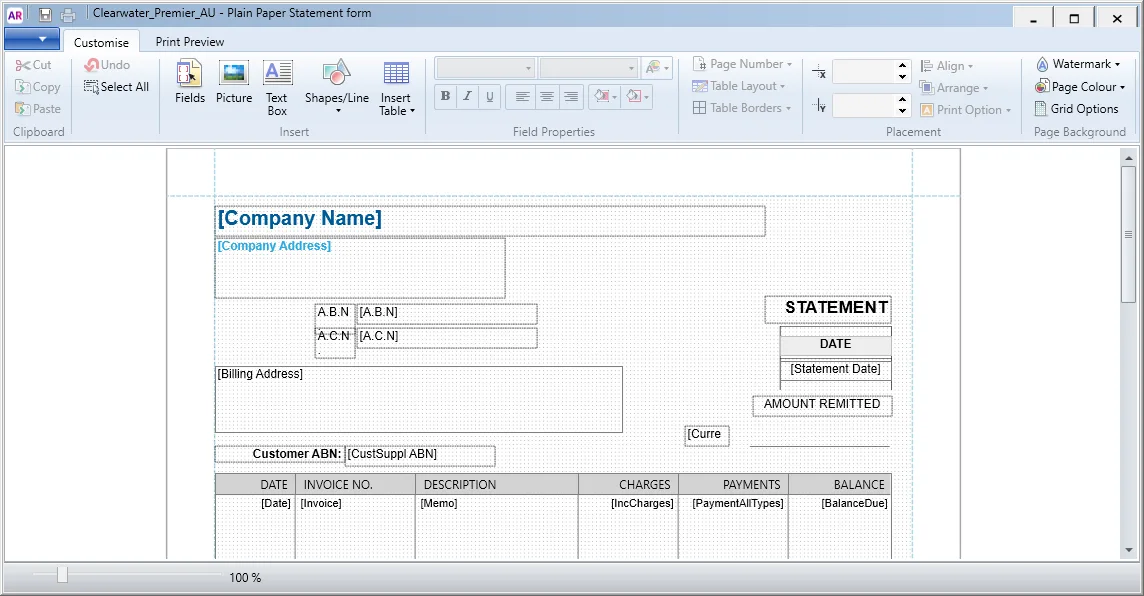
Customise the form to suit your needs.
Set up the page first
We recommend setting your page margins, orientation and page size first (show me how). Otherwise, changing this later can throw out any other customisations you may have made.
Here's some guidance on what you can do:
set page margins, orientation and page size. Click the Print Preview tab for options. To learn more, see Set the form size and background.
edit the page background. Click Page Colour for background colour options, Watermark for predefined watermarks, or select Custom Watermark. To learn more, see Set the form size and background.
add data fields. In the Customise tab, click Fields and select the fields you want to appear. For a description of each data field, see Fields and columns you can add to forms and to learn more about working with them, see Add text and fields to forms.
add or edit text fields. In the Customise tab, click Text Box, then click and drag the mouse cursor to draw a box on the area of the form where you want the text field to appear. Move or resize the text box as required. To learn more about working with text fields, see Add text and fields to forms.
add or edit a table. In the Customise tab, click Insert Table and choose the type of table you want to use from the list. Click the table box, and then drag the red cross to move the table into position. Click Table Layout and choose Show/Hide Columns. To learn more about working with tables, see Add tables to forms.
add a picture (business logo, letterhead, etc.). In the Customise tab, click Picture. Locate and select the picture file and click Open. Move, resize or rotate the image as required. To learn more about working with images, see Add pictures and shapes to forms.
move, arrange, align, cut, copy or paste form elements. See Editing form elements.
To preview your form, click the Print Preview tab.
When you've finished customising your form, click the Save button (top-left corner). The Save Form As window appears:
Enter a name and a description for the form
C.lick Save then click OK to the confirmation message.
To close the form, go to the File menu and choose Exit. If prompted to save again, click No.The Customise Forms window reappears. Your customised statement will be listed.
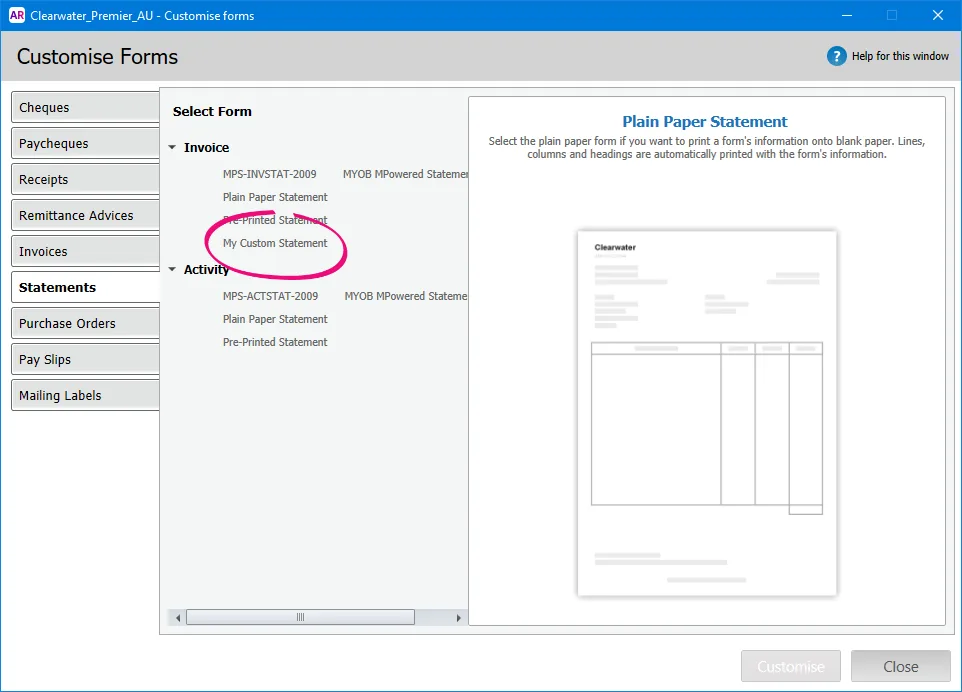
To add direct deposit banking details to your statements
Direct deposit is a popular payment option which lets your customers pay directly into your bank account. In Australia, the New Payments Platform is making this even easier.
Here's how to add banking details to your statement form.
Go to the Setup menu and choose Customise Forms. The Customise Forms window appears.
Click the Statements tab on the left.
Select the form you want to use then click Customise. The form opens, ready to be modified.

Click Text Box in the toolbar.

In the applicable place on your form, drag a box that's large enough to include your payment instructions.
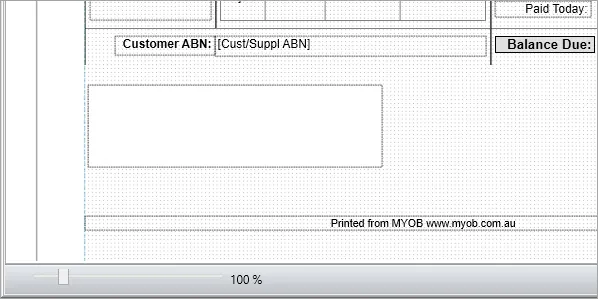
Double click the text box and type your payment instructions, for example:
For Direct Deposit:
BSB: 013000
Account: 12345678
Payment Reference: Invoice number or customer name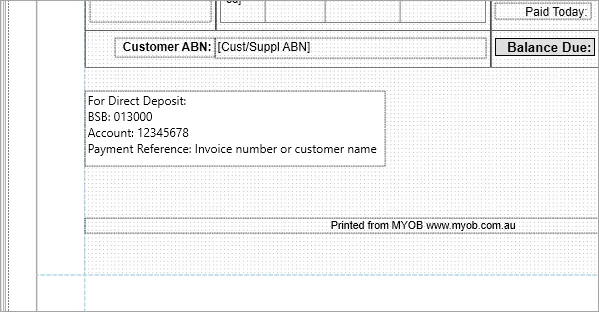
You can resize the text box, or format the text size, font and colour using the options in the Customise tab.
Click the Print Preview tab to check how the new section will look.
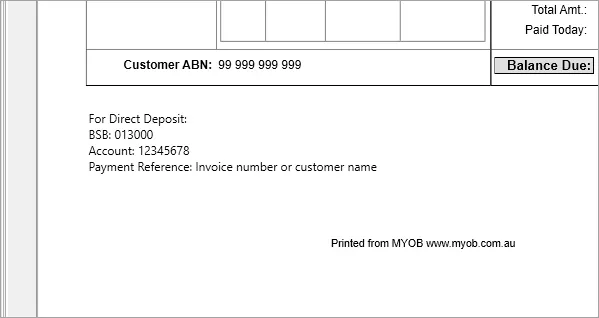
When you're done, click the Save button (top-left corner).
If prompted, enter a name for this customised form then click Save then click OK to the confirmation message.
To close the form, go to the File menu and choose Exit. If prompted to save again, click No.
Repeat this process for any other statement forms you want to add your payment details to.
To set your customised statement as the default
You've made the effort to personalise a statement, so here's how to use that statement when printing or emailing.
Go to the Sales command centre and click Print/Email Statements.
Click Advanced Filters.
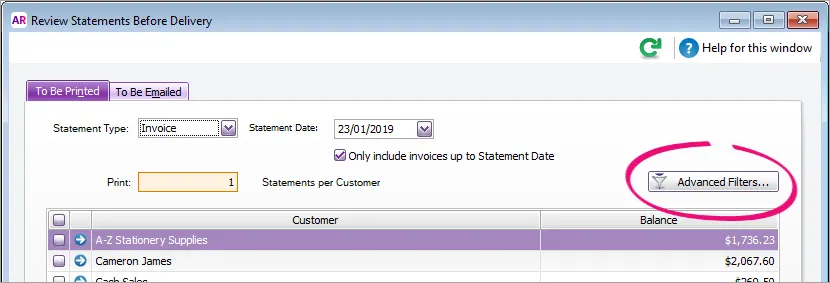
In the Selected Form for Statement field, select your customised statement.
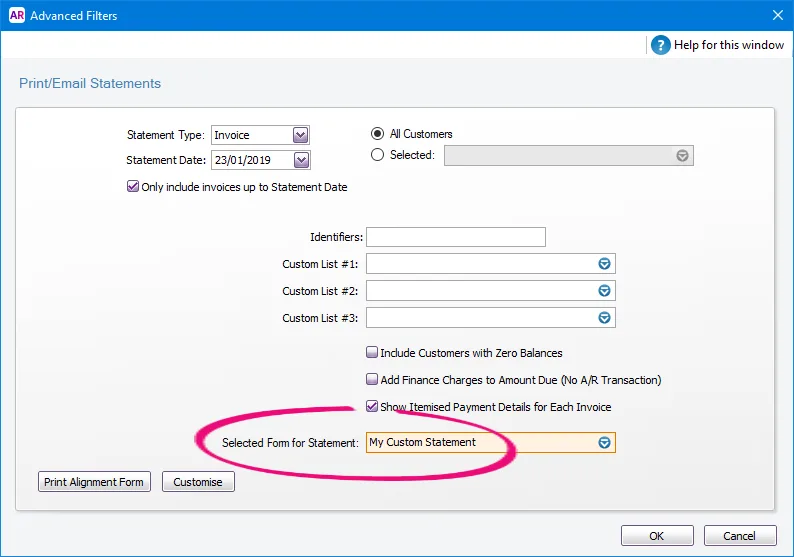
Click OK.
Your customised form will now be the default form when you print or email statements.
Can't see your customised statement?
Check that you've customised the correct statement form type. For example, if you're emailing or printing an invoice statement, only invoice statement forms will be available for use.
FAQs
How do I show the currency code on my statements?
AccountRight 2019.3 and later - If you're using multi-currency in AccountRight Premier, you'll want to show the currency code on your statements.
To do this, add the [Currency Code] data field and a text field to show "Amounts in" (or similar). Learn more about adding text and fields to forms.
Here's our example:
